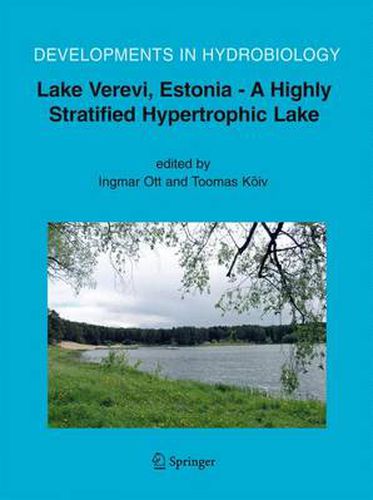Readings Newsletter
Become a Readings Member to make your shopping experience even easier.
Sign in or sign up for free!
You’re not far away from qualifying for FREE standard shipping within Australia
You’ve qualified for FREE standard shipping within Australia
The cart is loading…






This book summarises investigations on Lake Verevi (surface 12.6 ha, mean depth 3.6 m), located in the Estonian town of Elva, initiated since 1929. The seventeen articles deal with a wide range of questions, starting with a holistic overview of the ecological status, over assessments of long-term changes in biotic and abiotic conditions and finishing with proposed restoration plans. Abiotic chapters provide calculations on water and mass balance, distribution and fractions of phosphorus in the sediment, optical properties and penetration of radiation in the water column, sedimentation rate during the formation of stratification, and nitrogen circulation characteristics. All these phenomena explain the special environmental features of this highly stratified lake. Long-term changes, seasonal development, primary production and resource ratios inducing the distribution of species composition of various biota (bacterio-, phyto and zooplankton, periphyton, macrovegetation, macrozoobenthos, fish) are discussed. The most important issues are long-term investigations on a complex ecosystem, the phenomenon of partial meromixis, the description of restoration methods, and the existence of narrow microniches for plankton in the water column. The volume firmly establishes Lake Verevi as a model system of a natural aquatic habitat, experiencing a multitude of anthropogenic pressures, but for which restoration plans aim to provide sustainable management in the future.
$9.00 standard shipping within Australia
FREE standard shipping within Australia for orders over $100.00
Express & International shipping calculated at checkout
This book summarises investigations on Lake Verevi (surface 12.6 ha, mean depth 3.6 m), located in the Estonian town of Elva, initiated since 1929. The seventeen articles deal with a wide range of questions, starting with a holistic overview of the ecological status, over assessments of long-term changes in biotic and abiotic conditions and finishing with proposed restoration plans. Abiotic chapters provide calculations on water and mass balance, distribution and fractions of phosphorus in the sediment, optical properties and penetration of radiation in the water column, sedimentation rate during the formation of stratification, and nitrogen circulation characteristics. All these phenomena explain the special environmental features of this highly stratified lake. Long-term changes, seasonal development, primary production and resource ratios inducing the distribution of species composition of various biota (bacterio-, phyto and zooplankton, periphyton, macrovegetation, macrozoobenthos, fish) are discussed. The most important issues are long-term investigations on a complex ecosystem, the phenomenon of partial meromixis, the description of restoration methods, and the existence of narrow microniches for plankton in the water column. The volume firmly establishes Lake Verevi as a model system of a natural aquatic habitat, experiencing a multitude of anthropogenic pressures, but for which restoration plans aim to provide sustainable management in the future.